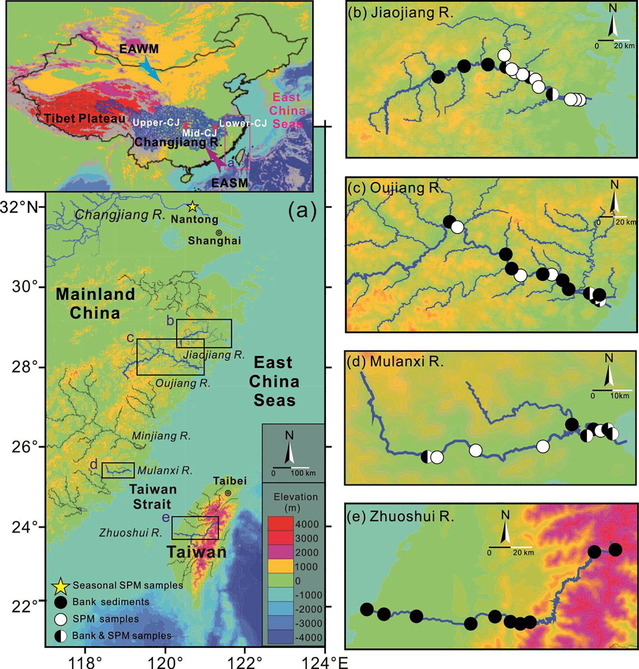Yulong Guoa,Shouye Yanga,b,Ni Sua,Chao Lia,Ping Yinc,Zhongbo Wangc
a State Key Laboratory of Marine Geology, Tongji University, Shanghai 200092, China
b Laboratory for Marine Geology, Qingdao National Laboratory for Marine Science and Technology, Qingdao 266061, China
c Key Laboratory of Marine Hydrocarbon Resources and Environmental Geology, Ministry of Land and Resources, Qingdao Institute of Marine Geology, Qingdao 266071, China
Abstract:
Although the proxies based on elemental geochemistry of siliciclastic sediments have been well developed to indicate the intensity of chemical weathering in various catchments, their geological indications and limitations, and especially how the differentiation of minerals and sediment grain size influences the applications of these proxies needs more clarification. This paper investigates the interactive effects of weathering, hydraulic sorting and sedimentary recycling on river sediment chemistry, and further validates the application of various weathering indices by measuring mineralogical and geochemical compositions of bank sediments and suspended particulate matters (SPMs) from five rivers in East China bearing various sizes, geologic settings and climatic regimes. For a specific river, the silicate weathering intensity registered in the fine SPMs is systematically stronger than that in the coarse-grained bank sediments. Most of the weathering indices not only reflect the integrated weathering history of various catchments but also depend on hydraulic sorting effect during sediment transport and depositional processes. The correlation between CIA (chemical index of alteration) and WIP (weathering index of Parker) offers an approach to predict the weathering trends of the fine SPMs, coarse bank sediments and recycled sediments under the influence of quartz dilution. To minimize the effects of hydrodynamic sorting and sedimentary recycling, we suggest that the fine sediments (e.g. SPMs and <2 μm fraction of bank sediments) in rivers can better reflect the average of present-day weathering crust in catchments and the weathered terrigenous materials into marginal seas and oceans.
Full article:https://www.sciencedirect.com/science/article/pii/S0016703718300851



